We present here three workshops showing how to come close to a given sound taken from several music styles.
Although it is impossible to reproduce exactly the original recording, we show how Pianoteq makes it possible to capture its colour, its atmosphere.
Rather than going into all the details, we concentrate here on the main stages, the most important being the order in which the settings are applied.
The changes in global settings need Pianoteq Standard while the note per note changes need Pianoteq PRO.
This workshop was prepared with the D4 from Pianoteq version 4, but of course the same technique can be applied to other pianos.
Important: in order to capture the finest nuances, a good audio setup is needed to listen to the following examples.
Workshop showing how to come close to a given sound taken from classical music.
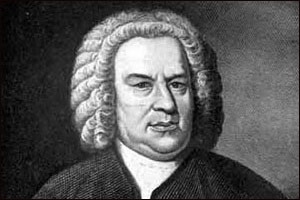 Target recording
MIDI file
Target recording
MIDI file
This is the recording we want to simulate. For copyright reasons, we present here only a short excerpt which is enough for our purpose. It is the Aria of Bach's Goldberg variations as recorded by Glenn Gould on a Yamaha grand piano in 1981.
 Choosing a preset
FXP
Choosing a preset
FXP
The first thing to do is to select the preset that will serve as starting point. We choose here the D4 Classical AB preset. Although the D4 is based on a Steinway D, the versatility of Pianoteq allows to come close to the target sound as we show it now.
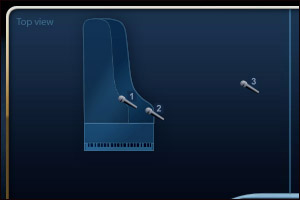 Microphone setting
FXP
Microphone setting
FXP
We start with microphone position. It will be easier to work on the other features if this has come already close to the sound we want to obtain. The original soundscape shows a rather close image combined with some room presence, so we choose here to place two microphones above the soundboard and a third one outisde the piano.
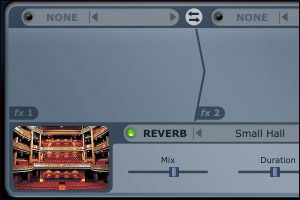 Reverberation
FXP
Reverberation
FXP
Very closely related to the microphone position is the reverberation which we choose to adjust at the beginning also, for the same reason as the microphone position. We go for Small Hall reverb with duration 1.8 sec, and pre-delay 0.06 sec for clarity.
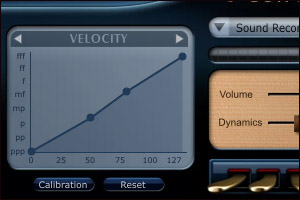 Velocity
FXP
Velocity
FXP
Next, let us adjust velocity, dynamics and volume so that the MIDI file we have at our disposal shows a similar soundscape as the target recording. We don't care here for the difference in performance, we are just trying to catch the atmosphere.
 EQ and hammer hardness
EQ and hammer hardness
It would be time now to adjust two other important global settings, the equalizer and the hammer hardness. As they seem OK, we actually do nothing here and have a little rest.
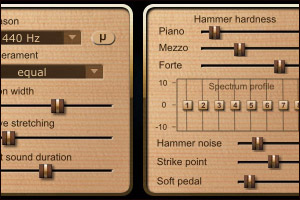 Tuning and hammer noise
FXP
Tuning and hammer noise
FXP
We slightly increase the unison detuning and add some hammer noise by gently pushing the corresponding sliders to the right. We also reduce a little the direct sound duration in the middle range (G2 to G3).
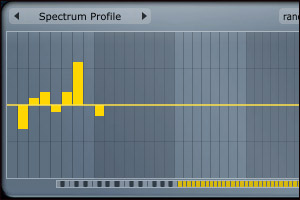 Voicing
FXP
Voicing
FXP
We can now leave the global settings and work on the final voicing by adjusting the overtones, and eventually the volume, of each note. That can take a certain time, depending on how close we want to get.







